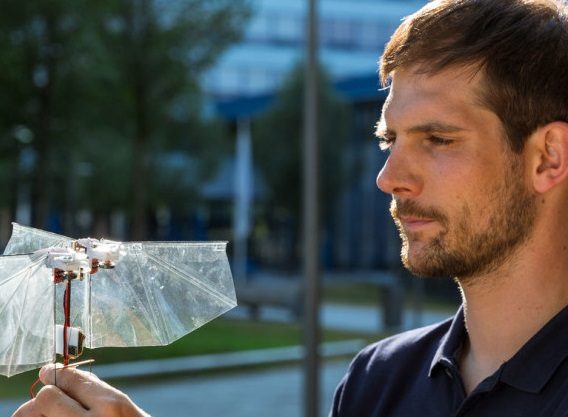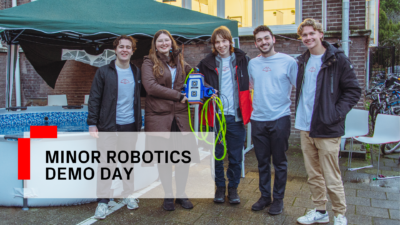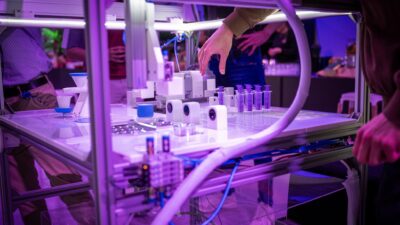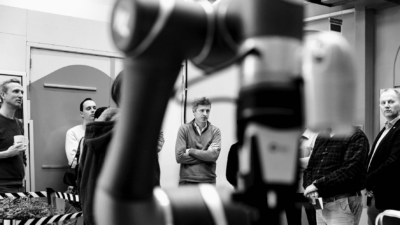Apart from its further potential in insect flight research, the robot’s exceptional flight qualities open up new drone applications. The results of the research have been presented in the latest edition of Science Magazine.
The DelFly Nimble, as the new robot is called, is so far unmatched in its performance, and yet with a simple and easy-to-produce design. As in flying insects, the robot’s flapping wings, beating 17 times per second, not only generate the lift force needed to stay airborne but also control the flight via minor adjustments in the wing motion.
Inspired by fruit flies, the robot’s control mechanisms have proved to be highly effective, allowing it not only to hover on the spot and fly in any direction but also be very agile.
“The robot has a top speed of 25 km/h and can even perform aggressive manoeuvres, such as 360-degree flips, resembling loops and barrel rolls”, says Matěj Karásek, the first author of the study and main designer of the robot. “Moreover, the 33 cm wingspan and 29 gram robot has, for its size, excellent power efficiency, allowing 5 minutes of hovering flight or more than a 1 km flight range on a fully charged battery.”
Potential for future applications
The MAVLab has been developing insect-inspired flying robots for over 10 years within the DelFly project. The MAVLab scientific leader, Prof. Guido de Croon, says: “Insect-inspired drones have a high potential for novel applications, as they are light-weight, safe around humans and are able to fly more efficiently than more traditional drone designs, especially at smaller scales. However, until now, these flying robots had not realised this potential since they were either not agile enough – such as our DelFly II – or they required an overly complex manufacturing process.”
The DelFly Nimble, builds on established manufacturing methods, uses off-the-shelf components, and its flight endurance is long enough to be of interest for real-world applications.



